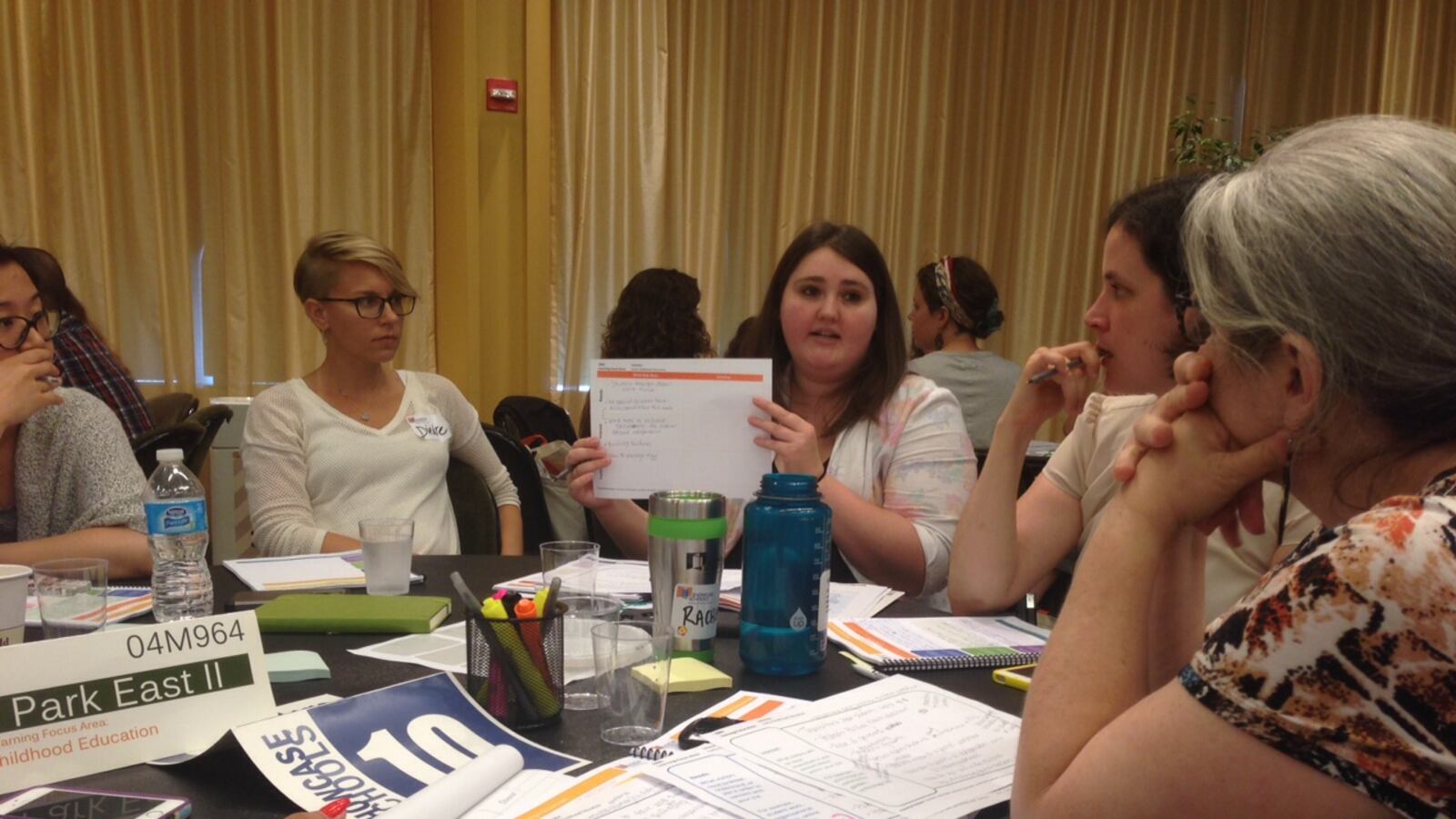Naomi Smith and her team at Central Park East II knew that their early-education methods worked. To demonstrate, they opened their doors to visitors from other schools last year, pointing out how time spent playing with blocks and Play-Doh helped the school’s youngest students learn and develop.
But there was one problem: Outsiders weren’t convinced.
“When people first came in, they were like, this is what your kids do all day?” said Smith, the school principal. “What is this?”
How to react to, and move past, that kind of disconnect was among the topics raised during a brainstorming session this week for New York City’s “Showcase Schools,” an initiative that debuted last October and required schools to offer tours to educators from other schools. City officials will announce Wednesday that the program is expanding to 27 schools, up from 20 — one of a number of growing collaboration programs that have become emblematic of Chancellor Carmen Fariña’s vision for improving the city school system.
Next year, about 220 schools will belong to one of four programs operated by the department’s Office of Interschool Collaborative Learning, representing roughly 14 percent of the school system. And workshops like the one held this week indicate that city officials are paying increasing attention to ensuring that the collaboration efforts are productive, as a few of those programs enter their second or third rounds this fall.
Disseminating good ideas through school visits is the central premise of three of the four programs. Schools in the Showcase program can draw visitors from any school who are interested in a specific concept the city has flagged as the school’s strength (Central Park East II’s is early education). In two versions of the city’s “Learning Partners” program, between three and eight schools form groups that visit each other’s schools.
The office is “growing in its reach because it speaks to the chancellor’s philosophy,” said Phil Weinberg, the deputy chancellor for teaching and learning, “which is rather than compete, we collaborate.”
The fourth program, the Middle School Quality Initiative, is one that Fariña inherited from the Bloomberg administration and is focused on helping schools improve literacy for middle-school students. That initiative, primarily designed for schools with large percentages of black and Hispanic students who qualify for lunch subsidies, is also set to expand from 87 to 108 schools, officials said.
While the middle school initiative is well-established, the Showcase schools, which began with 17 schools in October, belong to a program that is still developing, a process on display Tuesday. At dozens of small tables, discussions ebbed and flowed as principals and teachers imagined what visitors would want to get from tours at their schools.
“What will make visitors leave excited but not overwhelmed?” Milo Novelo, the department’s senior director Showcase Schools, asked the audience.
The schools were chosen for a wide range of strengths. P.S. 69 Vincent Grippo’s tours will focus on its arts curriculum, while Lower Manhattan Community Middle School was flagged for the way its teachers visit one another’s classrooms.
Three chronically struggling schools in the city’s school-turnaround program are also participating: P.S. 154 Jonathan D. Hyatt, J.H.S. 22 Jordan L. Mott, and P.S. 298 Dr. Betty Shabazz. Officials said they would be tasked with explaining their efforts to work with their local communities and how they have created a “sense of urgency” around improvement to other struggling schools.
At Central Park East II’s table, Smith and a colleague huddled with six others. The school was picked to showcase its “work time” period for pre-kindergarten through second grade, during which students work in different areas of a classroom that prompt students to paint, learn about class pets, or play with blocks, among other activities. The idea is to keep the activities unstructured and allow children to choose what they want to do, which Smith said leads to interactions students need as they acquire language.
“How would people know how to get that started?” asked Ellis Scope, an instructor at the Bank Street College of Education.
“I think showing that this can apply to all types of students, all different levels — which I know it does — I think that might be important,” said Patty Williams, a staff member in the office overseeing superintendents. “Because a visitor might say, well, this won’t fit the demographic of my school, this would never work at my school.”
As the meeting wrapped up, the educators returned to how they could avoid the confusion of Central Park East II’s first visits. Some suggested recording video of students talking about what they do during “work time” or providing case studies that illustrate how the format has worked for students with different learning needs.
Smith noted that the last tour she hosted was the best one. By then, she had started priming visitors by emailing them information about the model before the visit, then handing out a fact sheet when they arrived.
“By the last visit, we were like, this is so easy,” Smith said.
This article has been updated to include Milo Novelo’s title and the full name of the office that operates the Showcase Schools program.


